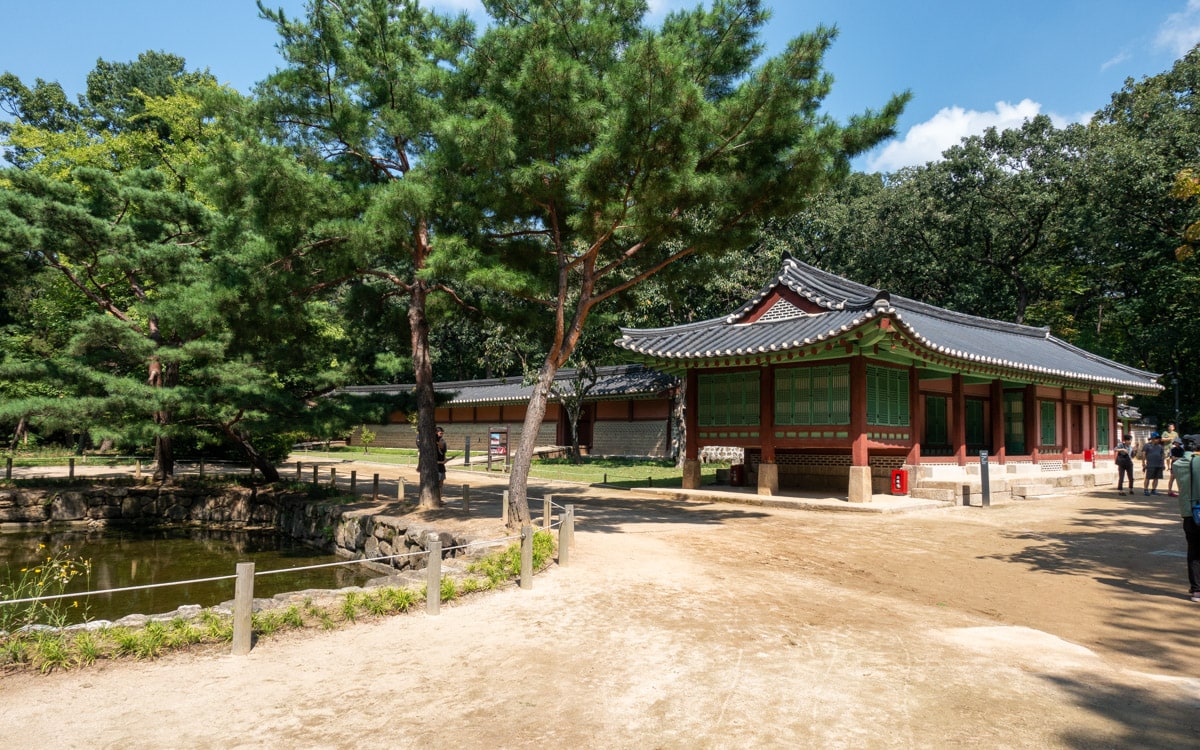
Jongmyo Shrine is the supreme shrine of the state. The site enshrines royal ancestor tablets and hosts memorial services for the kings and queens of the Joseon Dynasty. King Taejo ordered the construction of the Confucian-style shrine, completed in 1395.
Taejo, the first Joseon king, built the shrine to honor deceased kings and queens. He also ordered the construction of Gyeongbokgung Palace, building it at the same time.
If you visit on weekdays or Sundays, you must join a tour. If you want to see the shrine without a guided tour, plan on visiting on Saturdays.
Entrance to the shrine is included with the Integrated Ticket of Palaces.
Historical Timeline
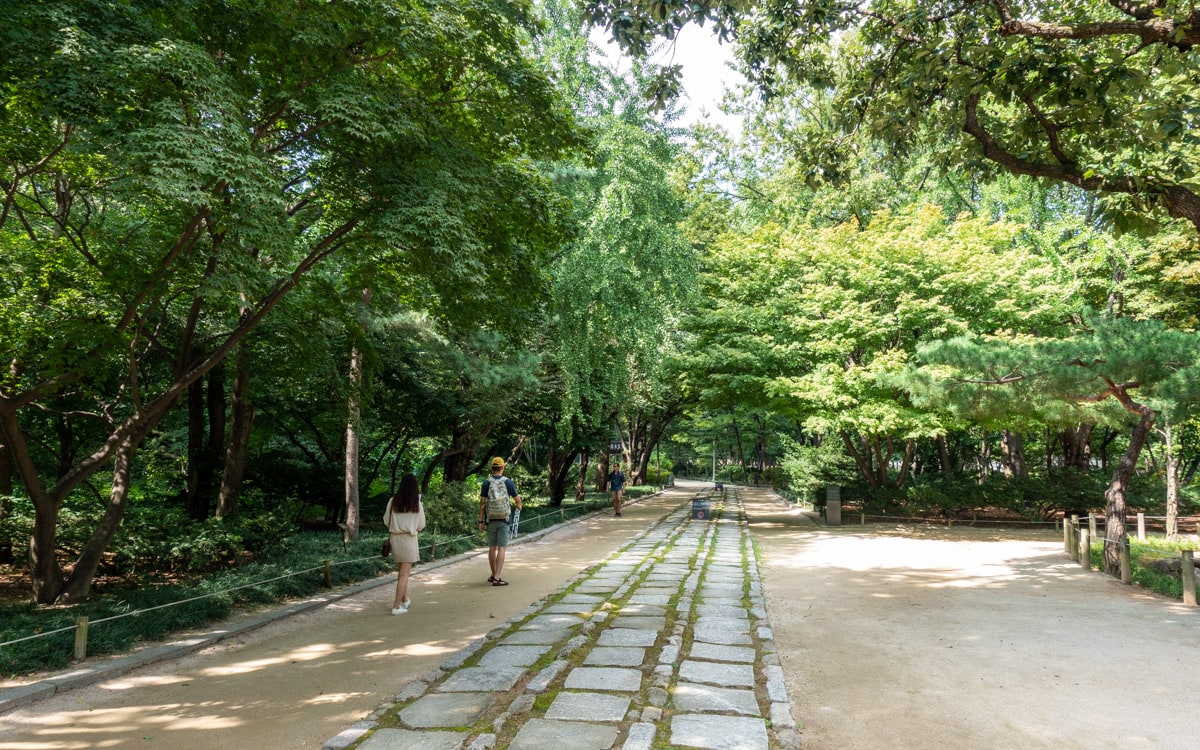
In 1395, Jeongjeon, the main hall, originally featured seven spirit chambers. Officials enshrined the most prestigious kings who lived a life of virtue in Jeongjeon.
In 1421, Yeongnyeongjeon Hall (Hall of Eternal Peace) was built with six spirit chambers.
The Japanese invasion of 1592 destroyed the original shrine, but fortunately, the tablets survived.
Jeongjeon Hall was rebuilt in 1608 and featured eleven spirit chambers. Over the years, the building expanded. In 1726, the hall expanded to fifteen spirit chambers. It was expanded once again to 19 spirit chambers in 1836.
Today, Jeongjeon houses 49 tables in 19 spirit chambers of past kings. King Yeonsangun and King Gwanghaegun do not have tablets here due to their removal from the throne.
Jeongjeon Hall is also one of the longest wooden buildings in East Asia.
Cultural Significance & Rituals
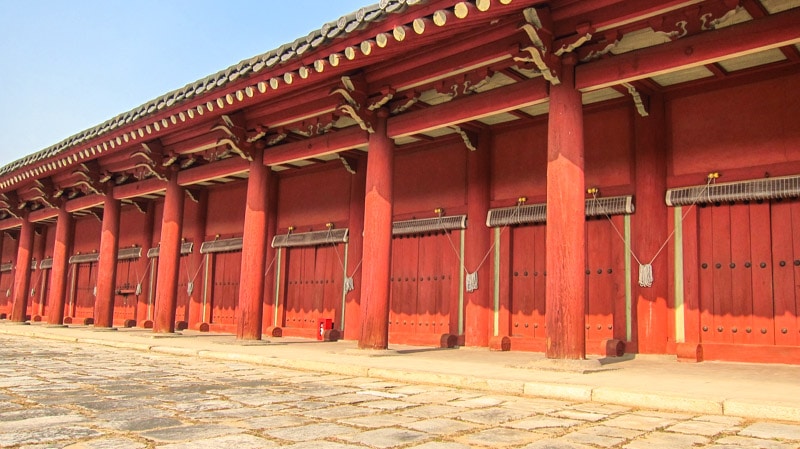
Mourning lasted three years after the death of a king or queen. After this period, officials enshrined a memorial tablet for the deceased at Jongmyo. When the shrine required more space, they expanded it.
Jongmyo is one of the few shrines in Asia that has preserved its royal traditions. It still upholds the same rituals of honoring ancestors through rites known as Jongmyo Jaerye, performed on the first Sunday in May and considered one of the oldest ceremonies in the world.
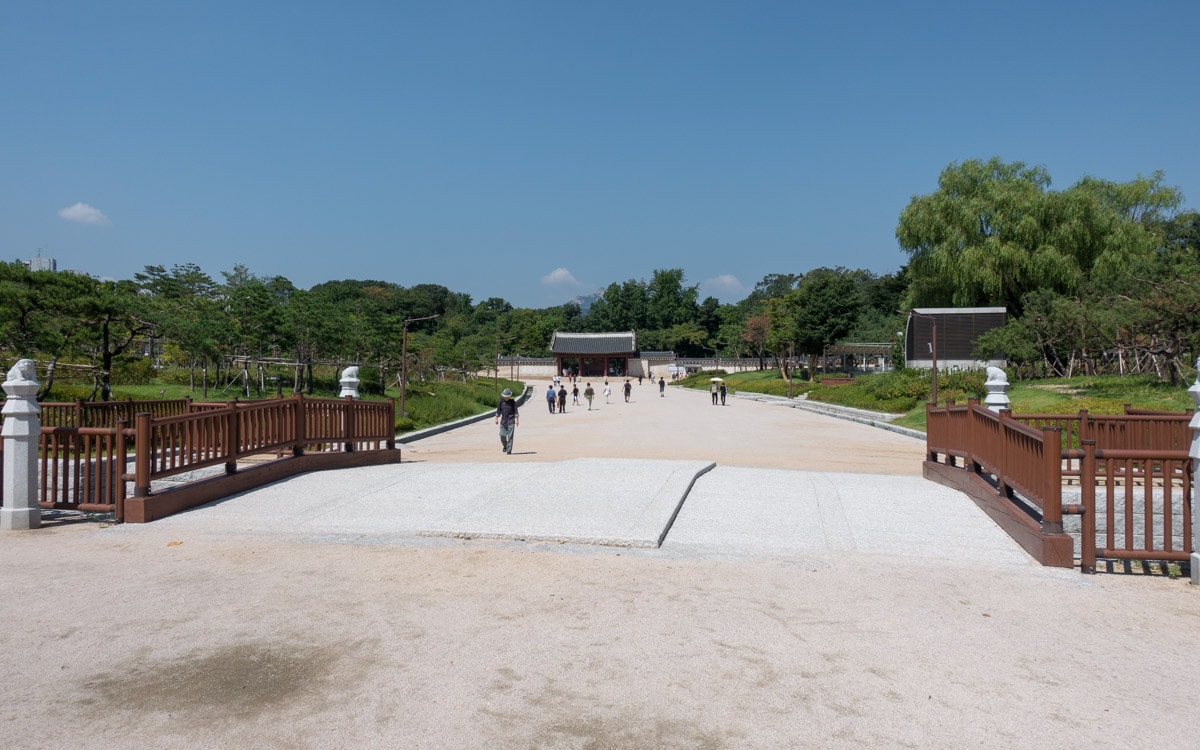
Jongmyo Jerye, or the Royal Ancestral Rite, was an important state ritual conducted by the king five times a year at Jeongjeon Hall and two times a year at Yeongnyeongjeon Hall. The prince, military government officials, and high-ranking civilians attended these events, which featured music, singing, and dancing.
The design of Jongmyo, as seen today, is simple. It emphasizes serenity and the deep meaning of life and death of Joseon Dynasty authority.
Jongmyo Shrine became a UNESCO World Heritage site in 1995.
What to see at Jongmyo Shrine
Akgongcheong
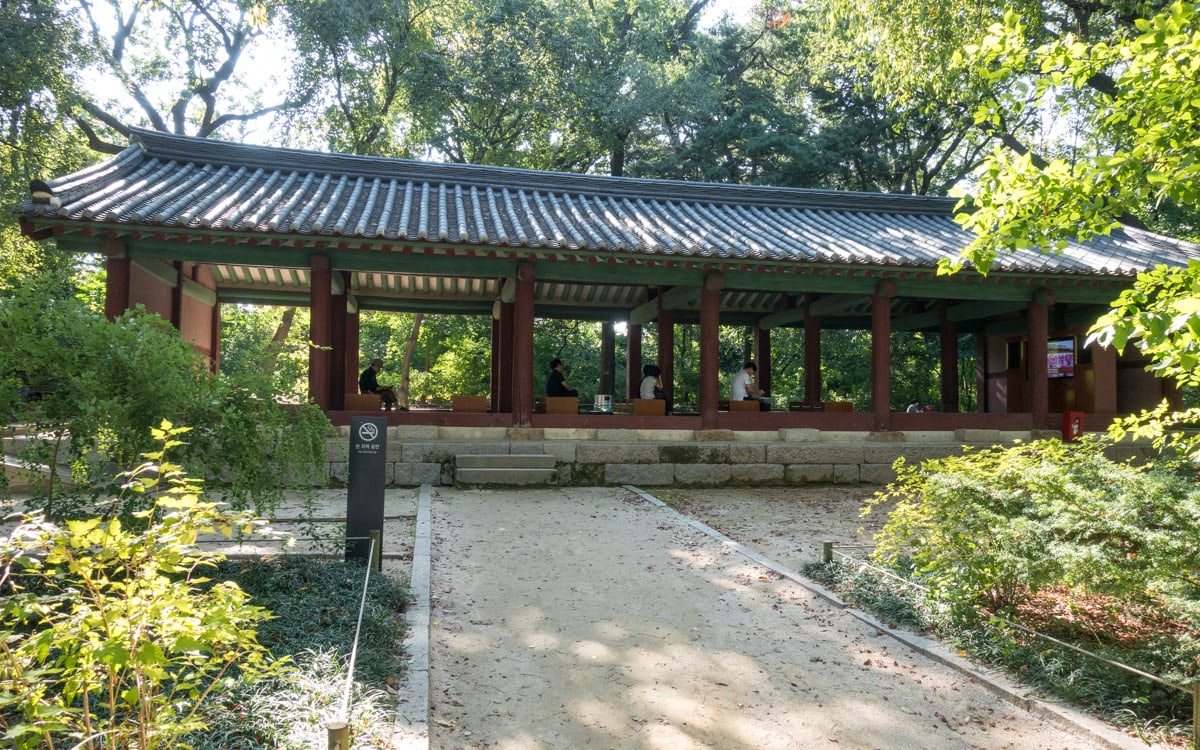
Akgongcheong was the court musician’s pavilion and dressing room. At this pavilion, musicians rehearsed songs for rituals.
Chanmakdan and Seongsaengwi
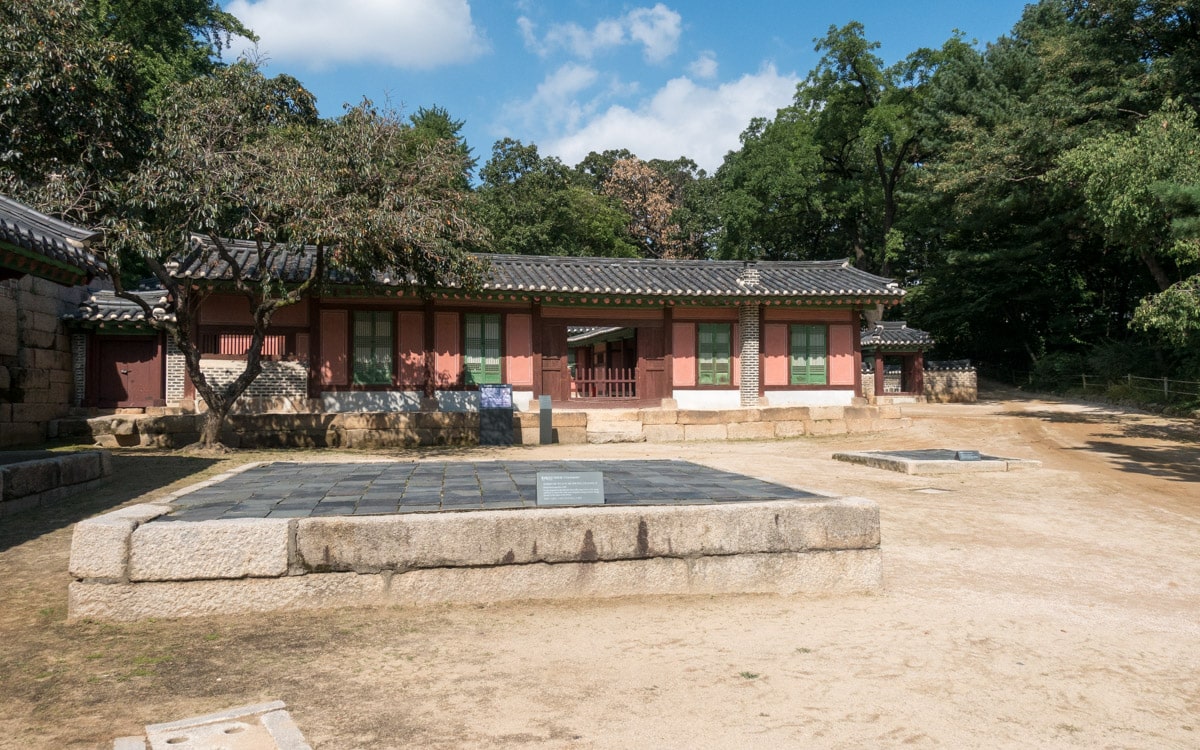
Chanmakdan is a raised stone table where officials inspected food before using it in rituals and ceremonies.
Once the kitchen prepared the food, officials placed it on this stone inspection table to ensure it met proper standards.
After officials inspected and approved the food, they placed it on altars around the shrine for use in rituals and ceremonies.
Another inspection table, known as Seongsaengwi, stands nearby. Officials used it to inspect animals such as cows and pigs before rituals.
Chilsadang Shrine
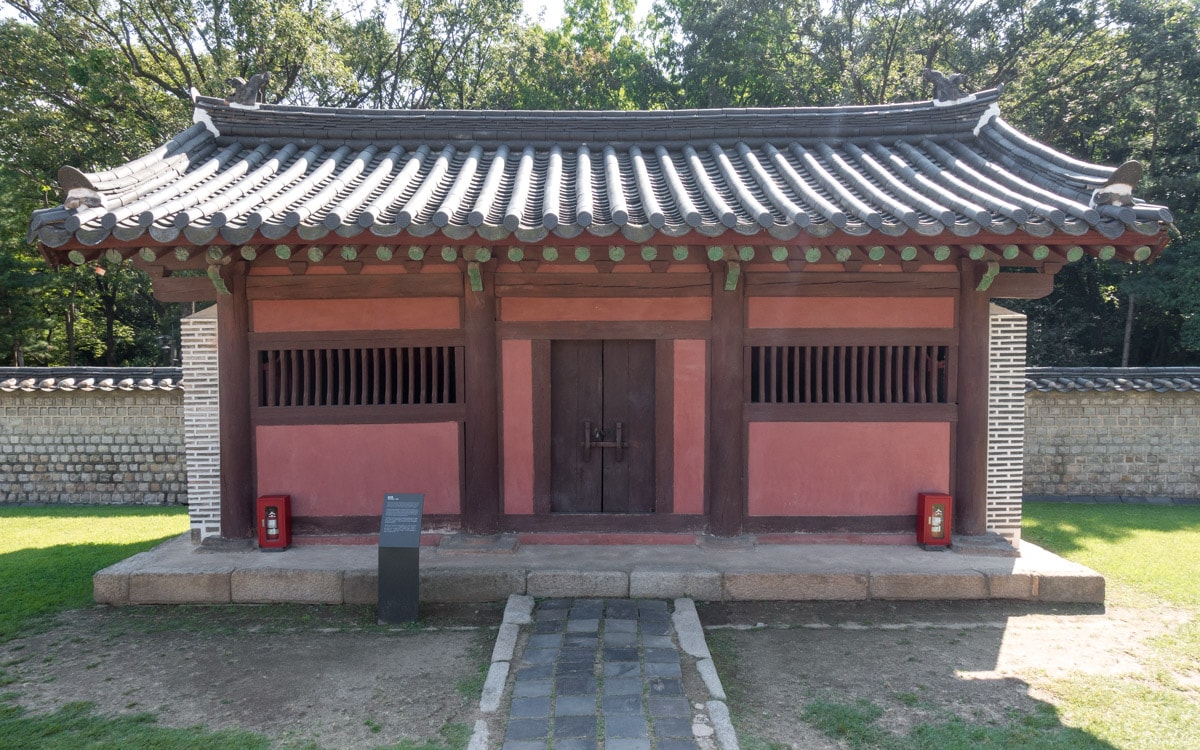
Chilsadang Shrine is a place of prayer and worship. It is an ancestral shrine and is the location of spirit tablets for the seven gods of heaven at the shrine. The gods enshrined here include the gods of gates, entrances and exits, halls, kitchens, other rooms, roads, and those who have died of diseases.
People came here to pray to the gods, hoping that royal and state affairs would occur without difficulties or problems.
These rituals to the seven gods of heaven involved traditional religious practices and Confucian philosophy.
Gongminwang Sindang Shrine
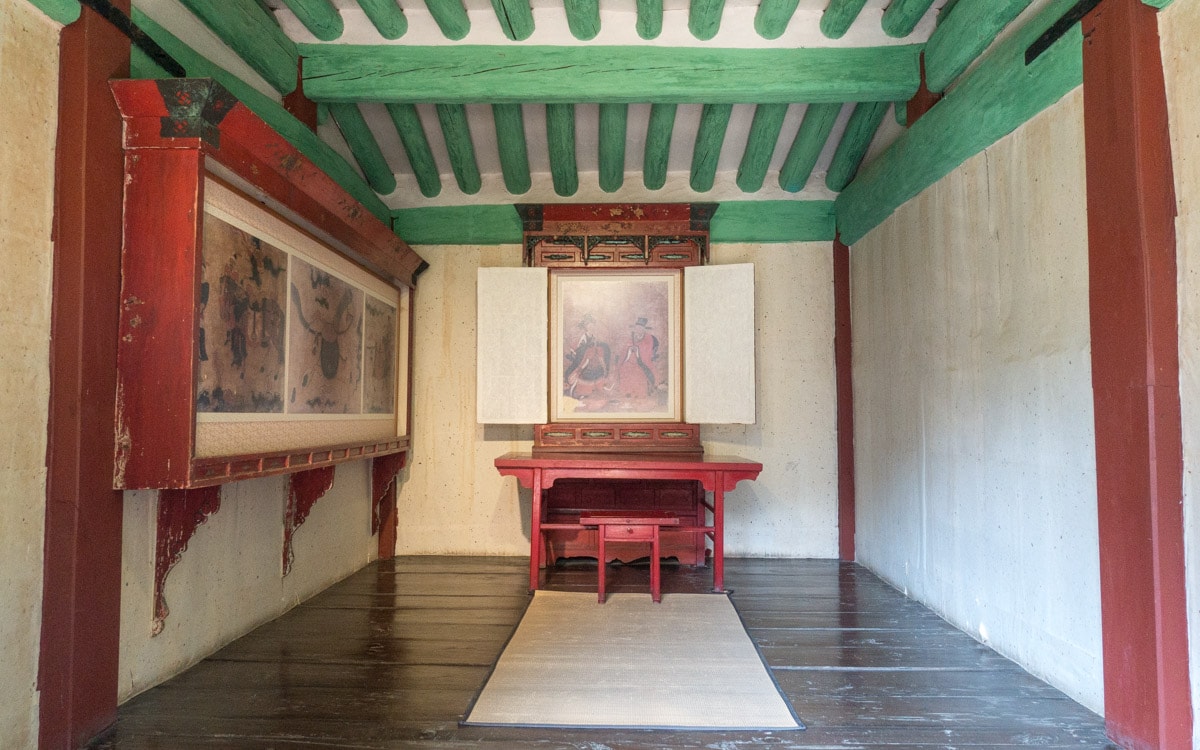
Gongminwang Sindang Shrine is a small shrine that honors King Gongmin and his wife Nogukdaejang Gongju, a princess from Mongolia. King Gongmin, born on May 23, 1330, was the 31st monarch of the Goryeo Dynasty.
During his reign from 1351 to his death in 1374, he implemented sweeping reforms and defeated Yuan China. His actions restored power and territory to the Goryeo Dynasty.
King Gongmin supposedly created the horse painting that is displayed here. Many recognized him as a talented artist and painter.
King Gongmin is enshrined in Jongmyo Shrine. It is unknown why a king of the Goryeo Dynasty is enshrined in the supreme shrine of the Joseon Dynasty.
Choe Man-saeng killed Gongmin in his sleep on October 27, 1374, after a dispute over an affair with a concubine.
Gongsindang Hall (Hall of Meritorious Officials)
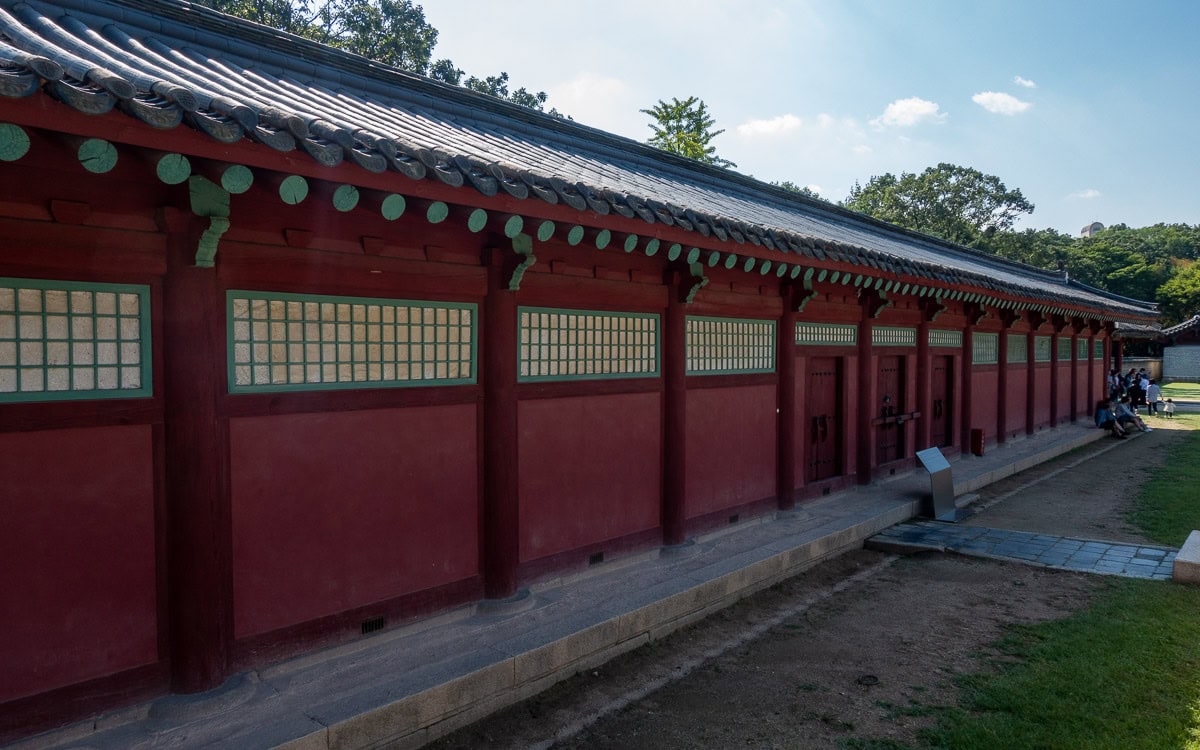
Gongsindang Hall (Hall of Meritorious Officials) is the location of the tablets for those who assisted the enshrined kings and queens at Jongmyo Shrine. There are 83 tablets enshrined here.
The building originally had three chambers but has since expanded to 16 chambers.
The design of Gongsindang Hall is beautiful but generally artless and plain compared to nearby Jeongjeon Hall and Yeongnyeongjeon (Hall of Eternal Peace).
Hyangdaecheong
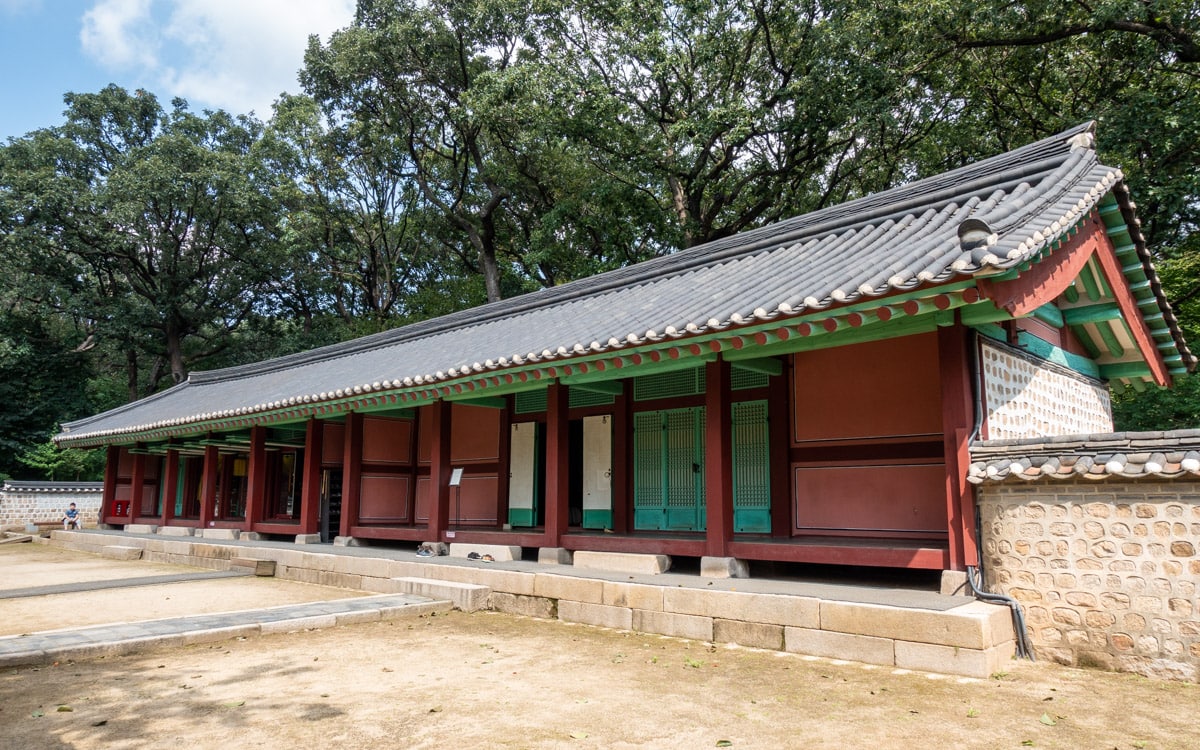
Hyangdaecheong is a storage room that held important supplies such as ritual paper, incense, and offerings used during ancestral rituals and sacrifices. On the day before an ancestral ritual, the king would send an official to Hyangdaecheong to retrieve supplies and utensils needed for the ceremony.
Officials would also meet and wait at this location before they would minister ancestral rituals.
Jaegung Area
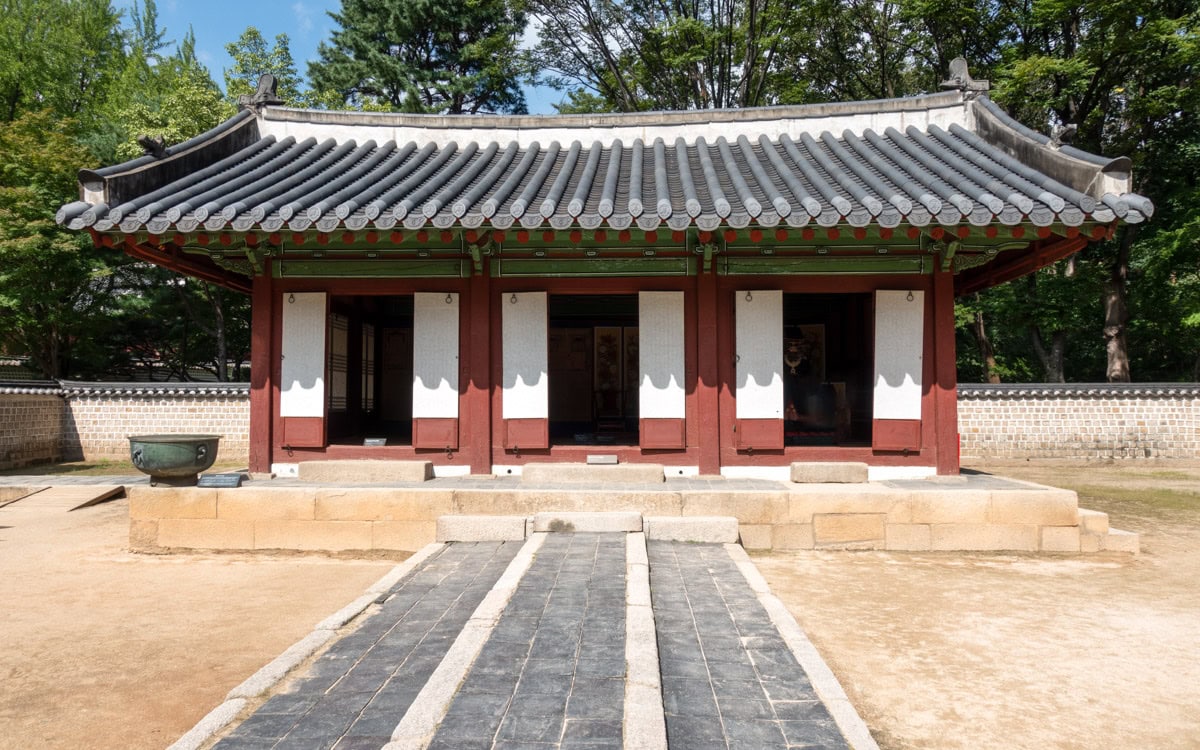
The Jaegung Area consists of three buildings where the king and crown prince prepared for ancestral rituals at Jongmyo Shrine. These buildings are Eojaesil, Sejajaesil, and Eomokyokcheong.
The king and crown prince would enter through the main gate. While here, they would clear and purify their minds, bodies, and souls before ancestral rituals. Afterward, they exited through the west gate and entered Jeongjeon Hall to perform the rituals.
Eojaesil, also known as Jaegung or Eosuksil, is where the king stayed and prepared before ancestral rituals at Jongmyo Shrine.
Inside Eojaesil is a portable throne or compact chair that carried the king around the shrine grounds. A folding screen decorated with peonies appears during special occasions. The peony, a type of flowering plant, symbolizes wealth and honor.
On the right side of the building is a model of Emperor Gojong who is wearing the ceremonial emperor clothing after proclaiming the establishment of the Daehan Empire in 1897. There are two types of ceremonial clothing: one for the emperor with 12 ornaments and one for the king with nine ornaments.
Sejajaesil is where the crown prince stayed and made preparations before ancestral rituals. Inside Sejajaesil is a ten-piece folding screen depicted with ritual vessels.
Sejajaesil lies to the east of Eojaesil.
The king and crown prince used Eomokyokcheong, a bath facility, to prepare before ancestral rituals. Inside Eomokyokcheong is a small carriage or palanquin that the king used to move around the shrine.
Eomokyokcheong lies to the west of Eojaesil.
Jejeong Well
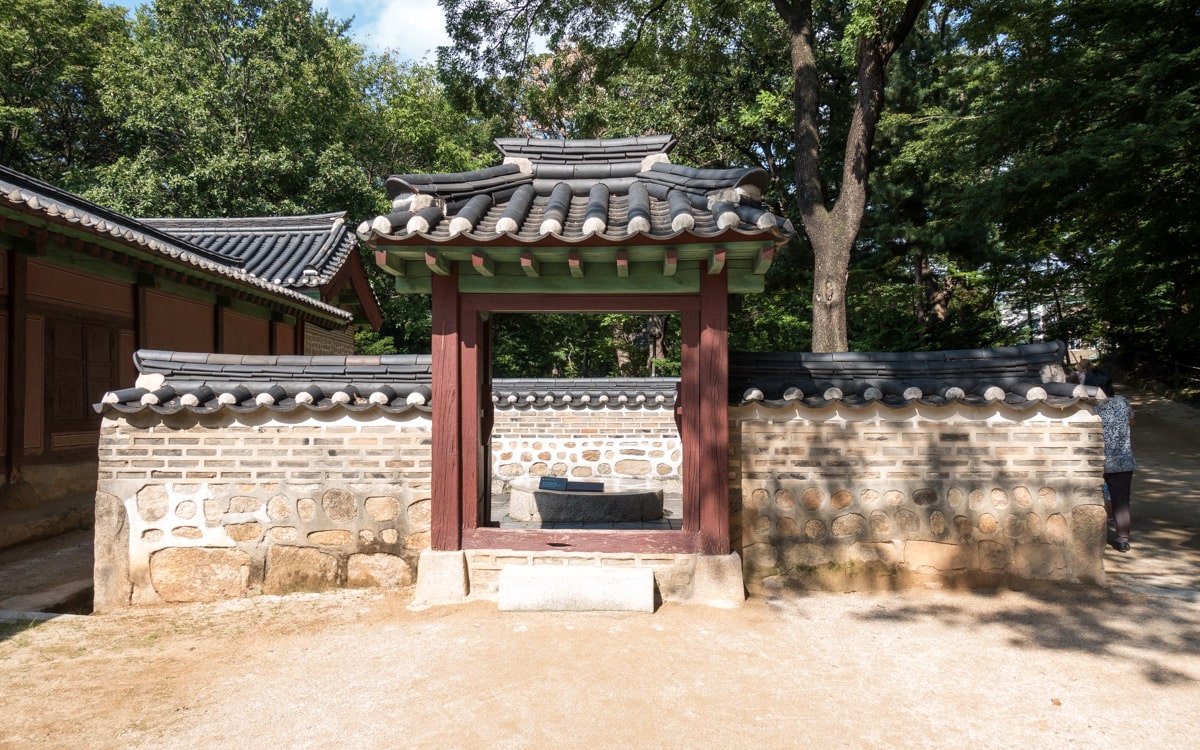
Jejeong Well, a stone shrine well, provided water before and during ancestral rituals and sacrifices at Jongmyo Shrine.
The name Jejeong, meaning ‘ritual well,’ refers to its role in providing clean water for preparing food and animals used in rituals. People also used it to cleanse participants, including the king, before ceremonies.
The well sits next to the Chanmakdan and Seongsaengwi inspection tables.
Jeongjeon Hall
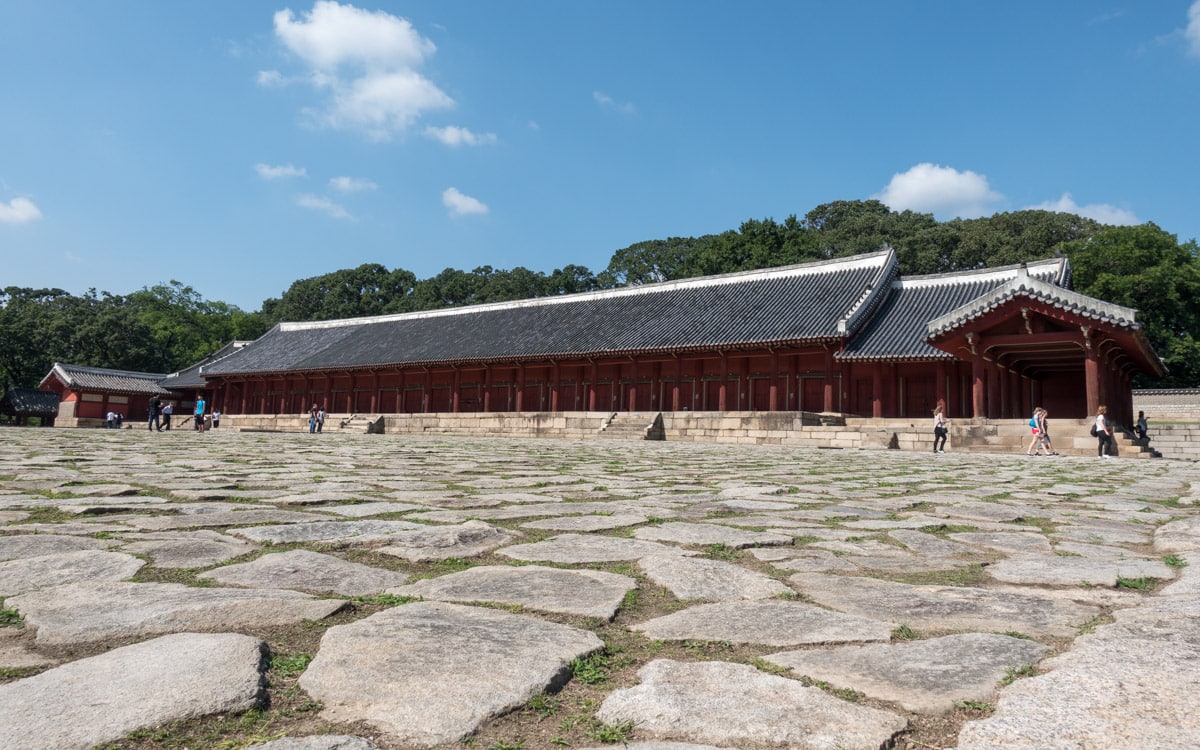
Jeongjeon Hall is the main hall and most important structure at Jongmyo Shrine. It is the location of the memorial tablets of 19 Joseon kings and queens. At 109 meters (357 feet), the building is one of the longest single wooden structures in the world.
When founded in 1395, it only held seven spirit chambers. Over the years, many alterations and additions occurred. The building expanded to 11 spirit chambers in 1546, 15 chambers in 1726, and 19 chambers in 1836.
A massive stone courtyard stretches in front of the building, enclosed by walls on all sides. Yeongnyeongjeon (Hall of Eternal Peace) has a similar feature.
Three gates allow access to the courtyard. The southern gate is where those believed spirits entered and departed. The eastern gate served as the entrance for the king and ritual officers, while ritual performers such as musicians and dancers used the western gate.
The design of this building appears to float over the stone courtyard. It is a perfect example of the beauty of Korean classical architecture.
On January 8, 1985, Jeongjeon Hall became part of the list of National Treasures of South Korea (Number 227).
Yeongnyeongjeon Hall (Hall of Eternal Peace)
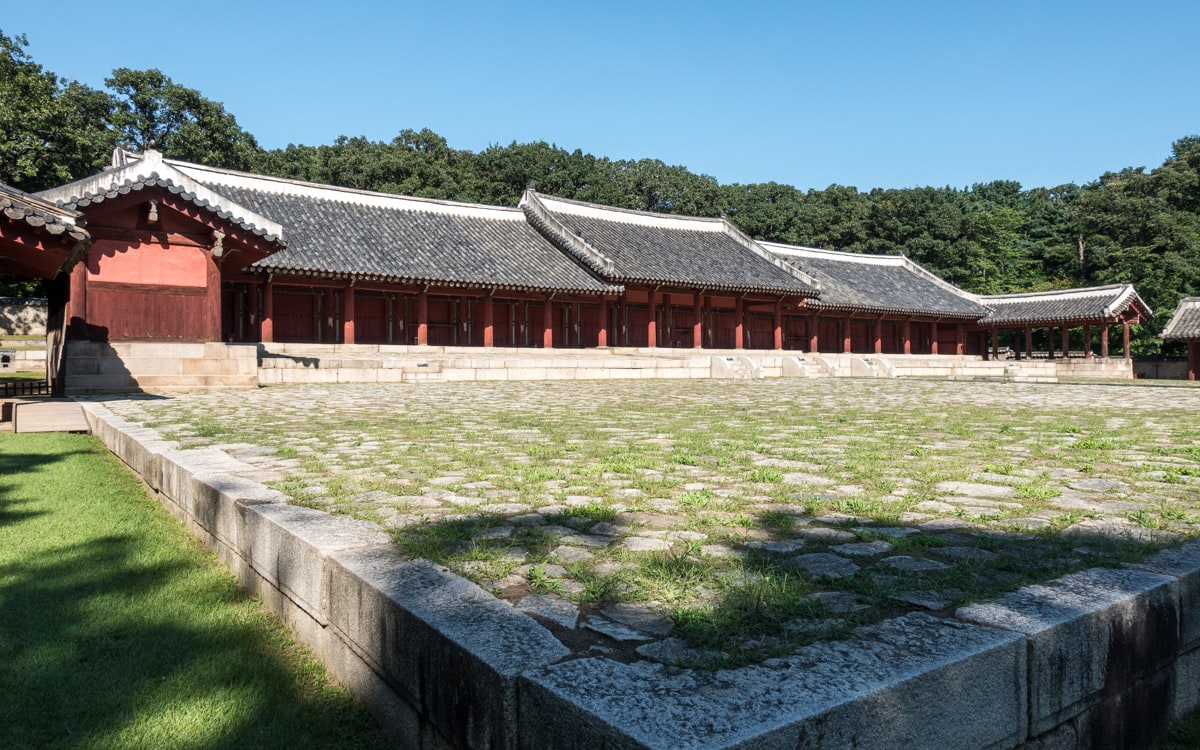
Yeongnyeongjeon Hall (Hall of Eternal Peace) houses 34 tablets in 16 spirit chambers today, including four generations of King Taejo’s ancestors and those crowned kings after their death.
The hall underwent reconstruction in 1608. The original design included ten spirit chambers, but additions over the years increased the number. The hall grew to 12 spirit chambers in 1667 and expanded again to 16 in 1836.
Video of Jongmyo Shrine
Jongmyo Shrine Information
Hours
March-September : 9:00-18:00
October-February : 9:00-17:30
Ticket office closes 1 hour before closing time.
Except for Saturdays, visitors to Jongmyo Shrine must join a guided tour.
Guided tours in English are at 10:00, 12:00, 14:00, 16:00.
Closed on Tuesdays
Admission
Adult (19+) : 1,000 won
Child : 500 won
This palace is included with the Integrated Ticket Of Palaces.
Address
157 Jong-ro, Jongno-gu, Seoul, Korea
GPS Coordinates: 37.57223, 126.99473
How to Get Here
Option 1
Take Subway Line 1 to Jongno-3-ga Station (Exit 11).
Option 2
Take Subway Line 3 or Line 5 to Jongno-3-ga Station (Exit 8).
Jongmyo Shrine Video
Map
Additional Resources
Viator by TripAdvisor
Viator is a popular online platform that helps travelers book tours, activities, and unique experiences worldwide, including in Seoul. It connects users with a wide selection of options – from sightseeing tours to cultural events and outdoor adventures – all offered by local providers.
Klook
Klook offers discounted tickets and reservations for various attractions and services in Seoul, from theme parks and museums to tours and transportation options.
Rakuten
Save money while exploring Seoul with Rakuten's cashback program. Book your hotels or other services through Rakuten and enjoy cashback rewards and exclusive deals.
If you sign up using the link below, you could earn $30 cashback on your first purchase over $30.
Book Recommendations
For an immersive guide to Seoul, many travelers choose to bring a book along. Fodor's Seoul, for example, offers detailed recommendations on sights, restaurants, maps, and travel tips.
Nearby Sights
Tteok Museum
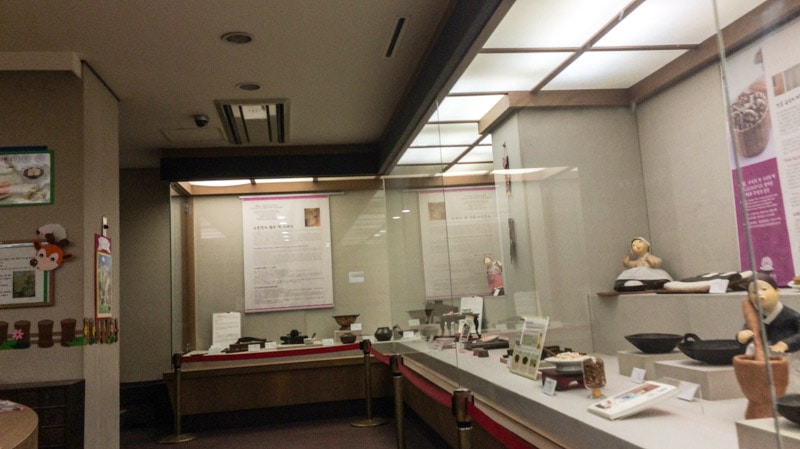
The Tteok Museum features displays of 50 different types of tteok, or rice cakes, and utensils used to make the dish enjoyed by generations of Koreans. The museum, located in Jongno-gu just east of Insadong, first opened in December, 2002. Tteok is made using glutinous rice flour and can be made using several methods including streaming, pounding, frying, and boiling.
Tapgol Park
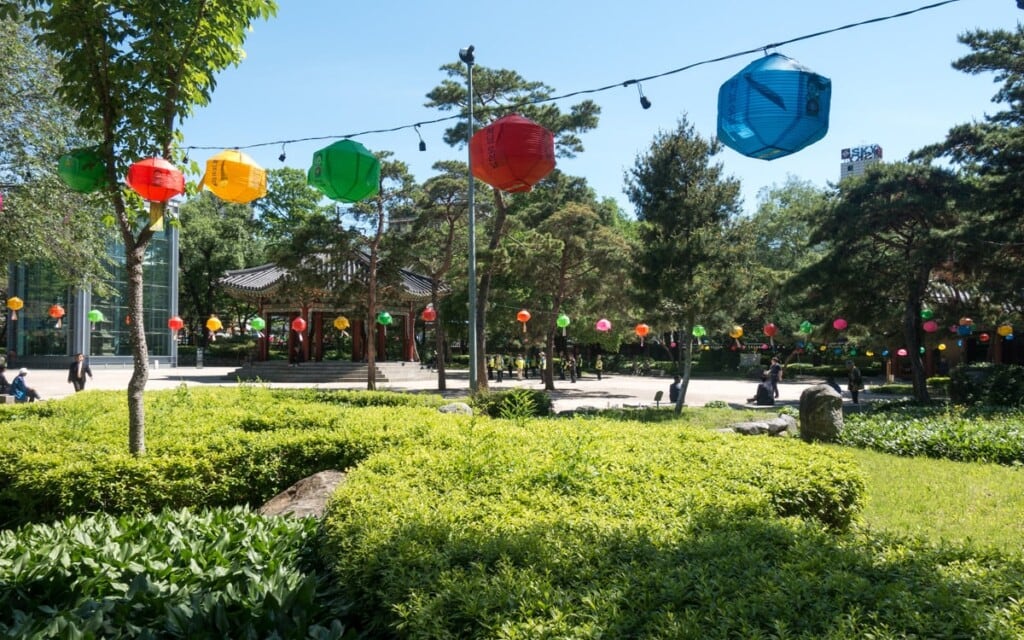
Tapgol Park is a public park that lies at the center of Seoul, near Insadong. It was here in 1919 where the March 1st Korean Independence Movement began. This movement called for the independence of Korea from Japanese rule. The highlight of the park is the famous enclosed marble Wongaksa Pagoda that was constructed in 1467.
Gwangjang Market
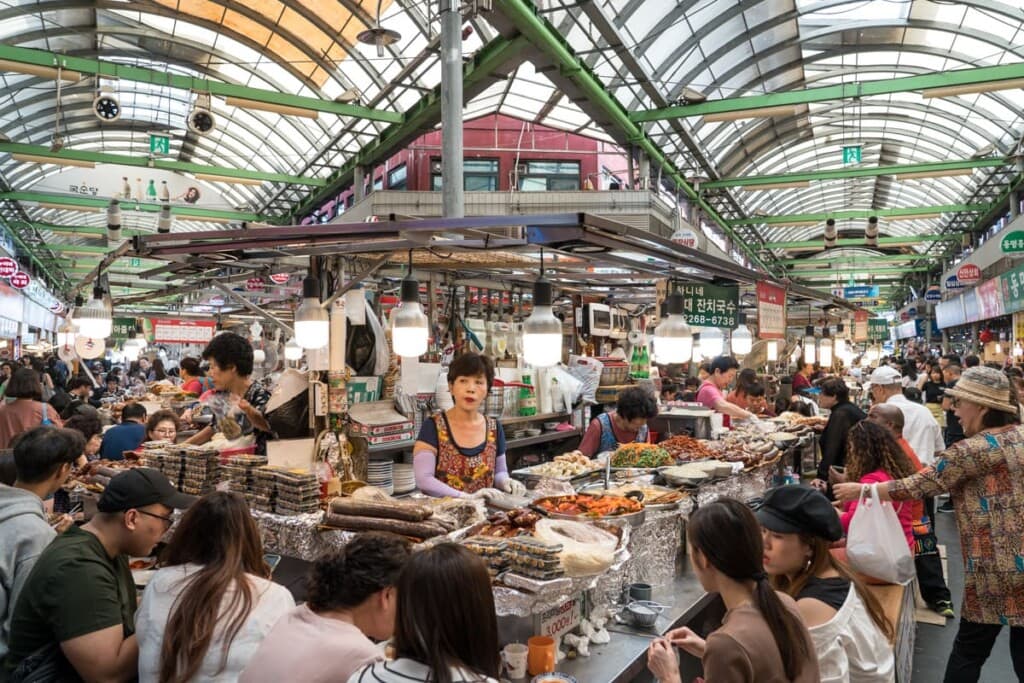
Gwangjang Market, one of the oldest traditional markets in Seoul, is popular with foreign visitors looking to sample some of the best Korean street foods. If you are looking for an authentic Korean cultural experience, along with some of the best bindaetteok in the city, then look no further. The market, first established in 1905, is today the oldest remaining daily market in Korea.
Changgyeonggung Palace
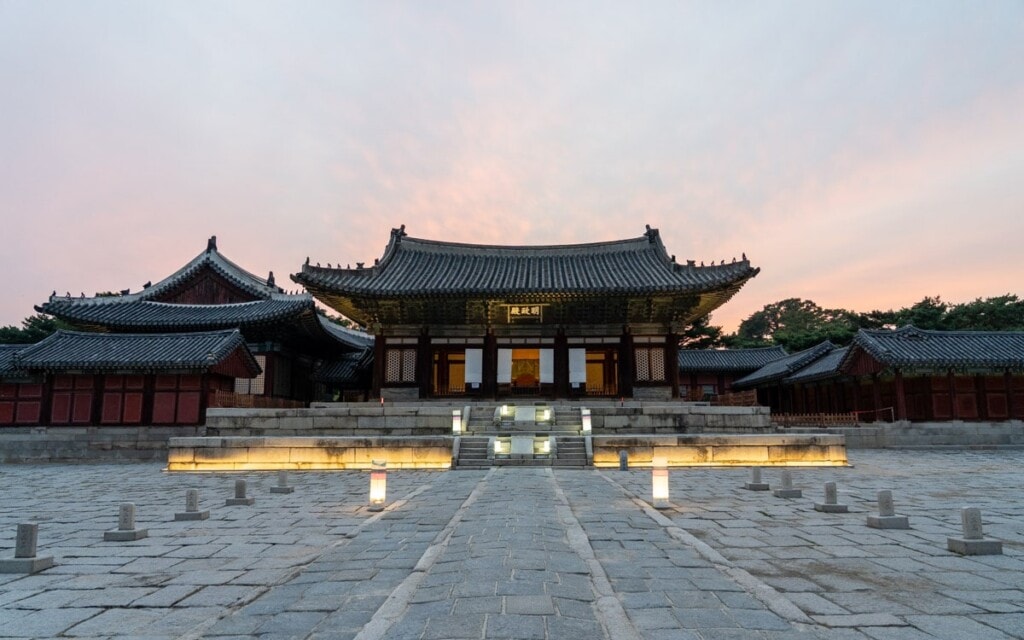
Changgyeonggung Palace, located in the heart of Seoul, has been used as a royal residence and and as a secondary palace for queens and the king's father. A summer palace known as Sunganggung was first built at this location in 1104 during the reign of King Sukjong of the Goryeo Dynasty.
Changdeokgung Palace
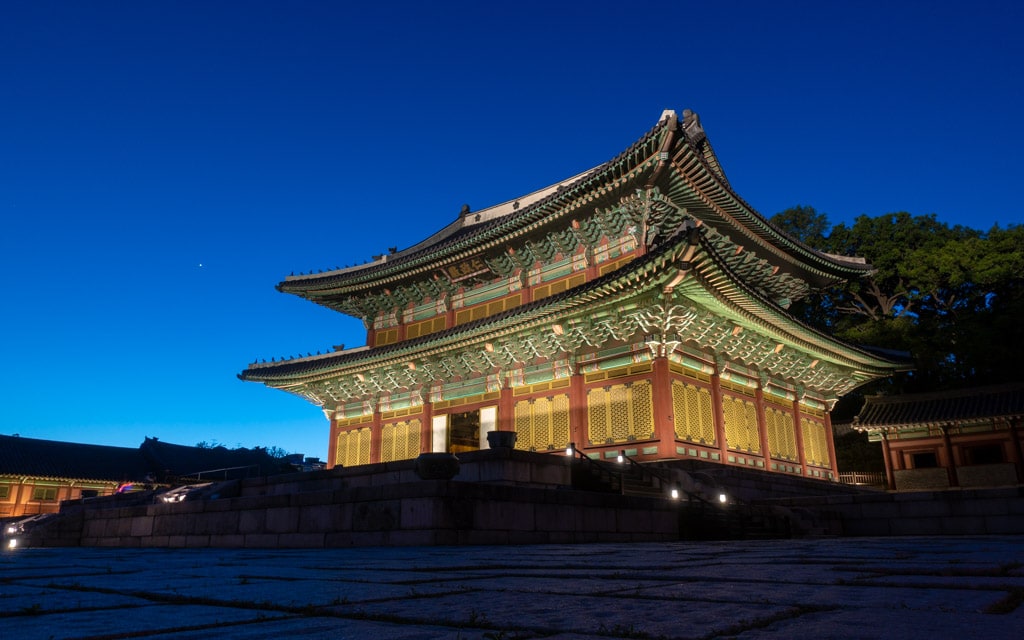
Changdeokgung Palace is a grand royal residence located east of Gyeongbokgung Palace. It is the best preserved of the remaining Joseon palaces. The palace is the second oldest in Seoul after Gyeongbokgung and was used as a secondary palace when first built. Construction on the palace known as "the palace of illustrious virtue" began in 1405 during the reign of King Taejong and was completed in 1412.
Seungdong Presbyterian Church
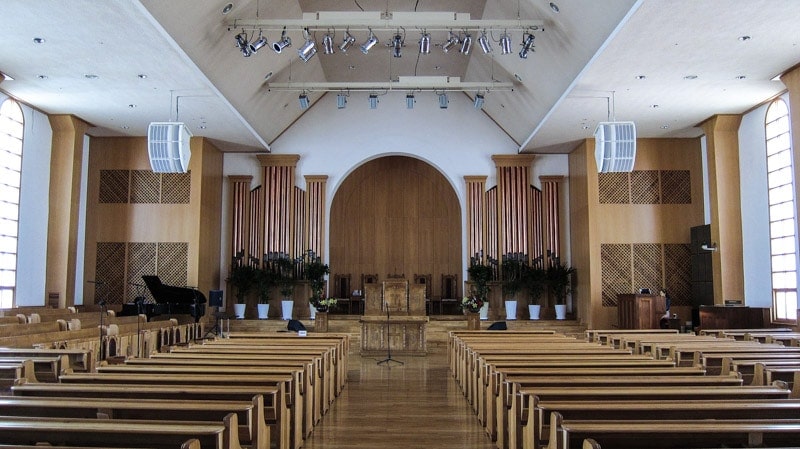
Seungdong Presbyterian Church, located near Insadong, was established in 1893 by Samuel Foreman Moore (1860-1906). Over the years, the church has been relocated and renamed many times. Before being renamed Seungdong, it has been known by as Gondanggol, Jungang, and Baekjeong. When the church was known as Baekjeong, meaning butchers, it attracted social underdogs and mysterious figures of the Joseon society.
Last Updated on Feb 8, 2025